1.2 Theatre
1.2.4 The origin makes the space
The unique feature of the theatre is that it is the name of the space that hosts its performance that has given rise to this Art and which hosts most of the performances related to the Performing Arts today, such as dance ballets. Western theatre, as we know it today, has its roots in the theatre of Greco-Roman antiquity. This artistic and religious practice took shape in the fifth Century BC during the Pericles in Ancient Greece. The "theatron" was thus the "place from which one could see" the performance. In concrete terms, this means that this activity then takes place in a dedicated, purpose-built venue. This semicircular space is usually set against a natural relief, with tiers of seats (koilon in Greek and cavea in Latin) and a lowered stage (orchestra et skene). Some ancient Greek theatres are well known, such as Delphi or Epidaurus. Still, as the Romans took over this building model, there are also the remains of ancient theatres in Western Europe that are still used for live performances, such as the theatre in Orange (France), which hosts the Chorégies Festival dedicated to lyrical Art.
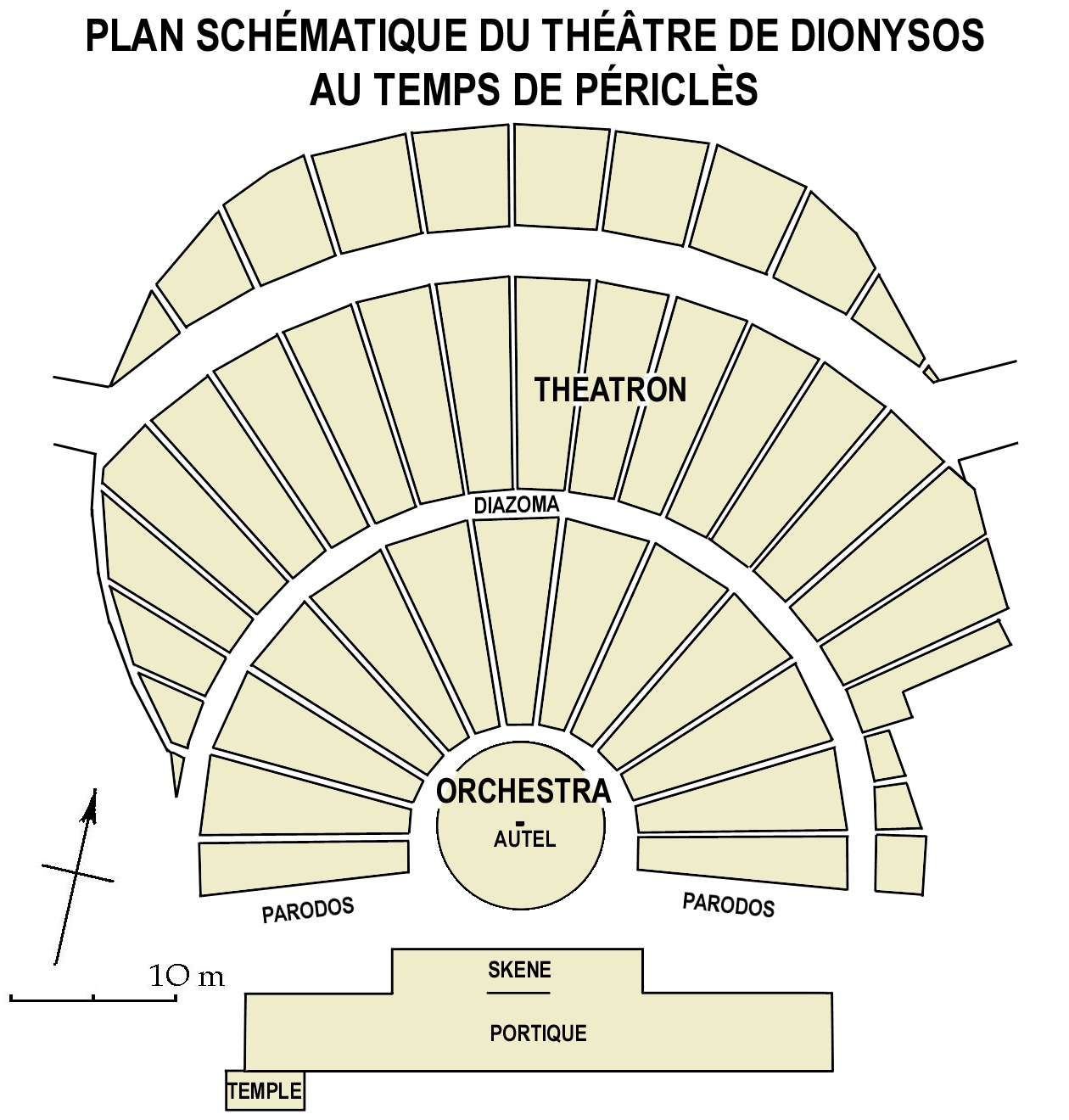
Schematic plan of the theatre of Dionysus in Athens, at the time of Pericles (5th century BC). From Image:Dionysus-theater.JPG, HC Baldry (Le théâtre tragique des Grecs, p.60), Paul Demont & Anne Lebeau (Introduction au théâtre grec antique, p.45). License Creative Common
uins of the ancient theatre of Orange (1st century AD, France). View on the stands, the orchestra and the stage.
Credits: Cécile Chantraine Braillon (2014)
In the Western world, this space configuration for holding a theatrical performance is still very prevalent. Most of the venues designed for this purpose follow this layout, with at least the following breakdown: on one side, the space for the public and on the other, 'in front', the stage, which is the space for the actors and the theatrical performance.

Le Phénix,Scène nationale, Pôle Européen de Création, Valenciennes (France)
This is still particularly true of recently built theatres such as the one in Valenciennes (France), which now houses the Pôle Européen de Création and the Scène Nationale du Phénix. However, this is not the only possible arrangement. In the Western world, there are also spaces configured in such a way as to allow either a better perception of the performance by the audience or a better interaction between the spectators and the actors.
One thinks, for example, of the so-called "round" or "circular" theatre, which allows the performance to be seen from different angles, such as the Teatro Circular in Montevideo (Uruguay), l'Européen in Paris (France) or the Chichester Festival Theatre (Royaume-Uni). This type of space is linked to the influence of the circus and its artistic practices on the theatre, with its performance ring of tricks in the round. During the 19th Century, the construction of spaces partly dedicated to it, such as the Cirque d'Hiver in Paris (1852) or the Cirque de Reims (1867), which today houses the scène nationale Le Manège, made it possible to consecrate this configuration as the one that offers the possibility of appreciating the live performance from different angles.
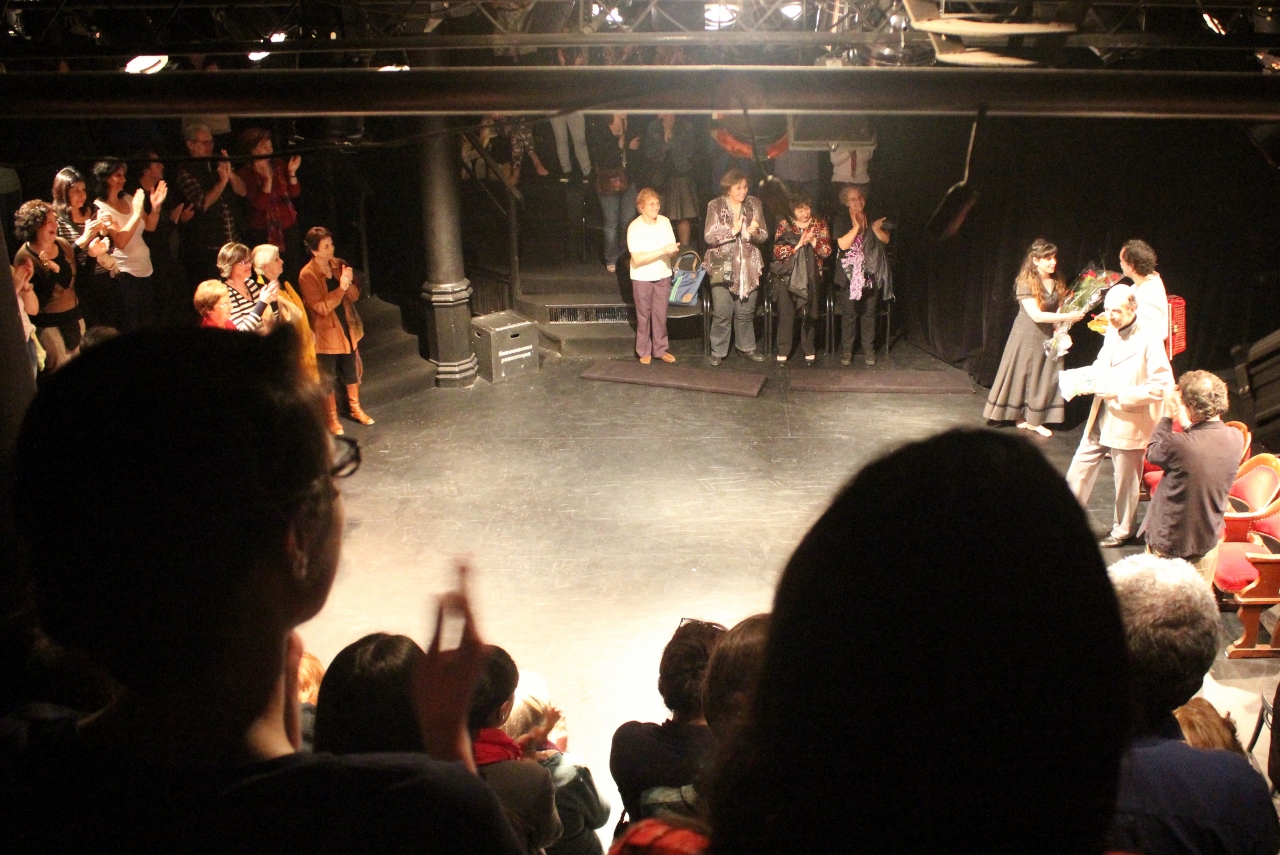
Teatro circular in Montevideo - Uruguay
There are also live performance venues configured so that the audience space and the performance space intersect permanently, so that there is a strong interaction between the audience and the artists and, above all, that the artists feel that they are part of the performance.
One of the companies that has historically proposed such an arrangement of theatrical space is the Théâtre du Soleil, which, in its building situated at La Cartoucherie in the north of Paris (France), thought up the presence of multiple stages mounted on trestles like in the Middle Age where the actors played simultaneously and around which the audience was spread. In this type of space, there is a desire to make the spectator an actor in what he is seeing and for the live performance to have an effect on him, to upset him and transform him at the end of the performance.
It has to be helpful and, as Richard Schechner points out, it is a theatre marked by "efficiency" and less by "entertainment" (Schechner, 2003), which would characterize the theatre produced in spaces considered more traditional or conventional where the physical separation between audience and artists is more marked.
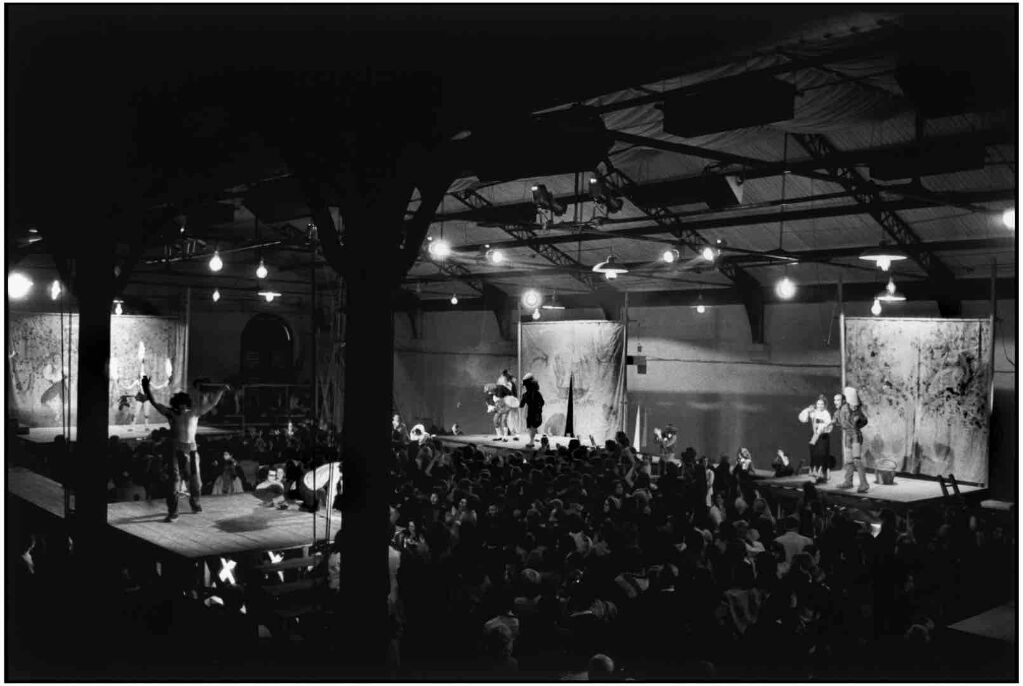
Live show 1789, "Théâtre du Soleil", La Cartoucherie, Paris, 1789.
©Martine Franck / Magnum Photos
The use of so-called 'unconventional' venues to perform theatre, while conditioned by economic reasons -as is the case in Latin America, for example- is also generally linked to the desire to create both immersive performances in which spectators have the feeling of being immersed in the universe recreated by the play, and to make them see this space, as well as the world in general, in a different way, or give them a new or lost meaning.
One example is the play Proyecto Felisberto staged in 2014 by Mariana Percovich in a bourgeois house in Montevideo, where spectators wandered around different rooms to watch scenes related to the work of the Uruguayan writer Felisberto Hernández. The idea was to make them feel the atmosphere that reigned in these houses at the beginning of the twentieth Century, which was the setting for the author's stories.
This said, the so-called 'conventional' or 'traditional' space does not prevent the actors from breaking the famous 'fourth wall' (Diderot, 1758) and in reality, the theatre known in French as 'théâtre à l'italienne' or 'proscenium theatre', the first models of which emerged during the Renaissance, is inspired not only by the ancient Greek theatre with its semicircular distribution of the audience around the actors' performance space but also by the medieval theatre because of the elevation of the stage in relation to where the spectators are placed.
This type of theatre, which remains the dominant model in the Western world, is also influenced by the era in which it was born by reproducing the functioning of the market economy with, on the one hand, the construction of a closed space dedicated to activity and, on the other hand, a division of the place between the space of consumption (lobby and house) and the space of production (stage, backstage, offices, dressing-rooms) (Schechner, 181-182).
Recent examples of Elizabethan theatre reconstructions that demonstrate this triple heritage are the Shakespeare's Globe Theatre in London (UK) and the theatre in the seaside resort of Hardelot (France); The Almagro Teatro de Corral, which has survived to the present day, is also an excellent example.
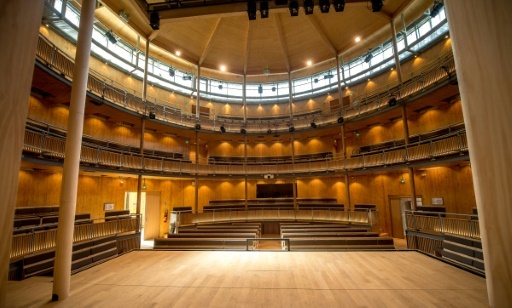
Elizabethan Theatre of Hardelot (Condette, France, 2016)
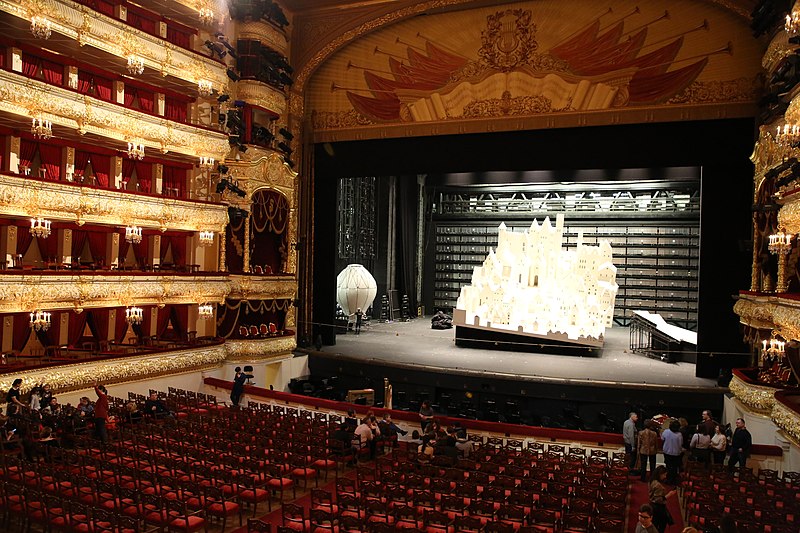
Bolshoi Theatre in Moscow (Russia) - 19th Century

